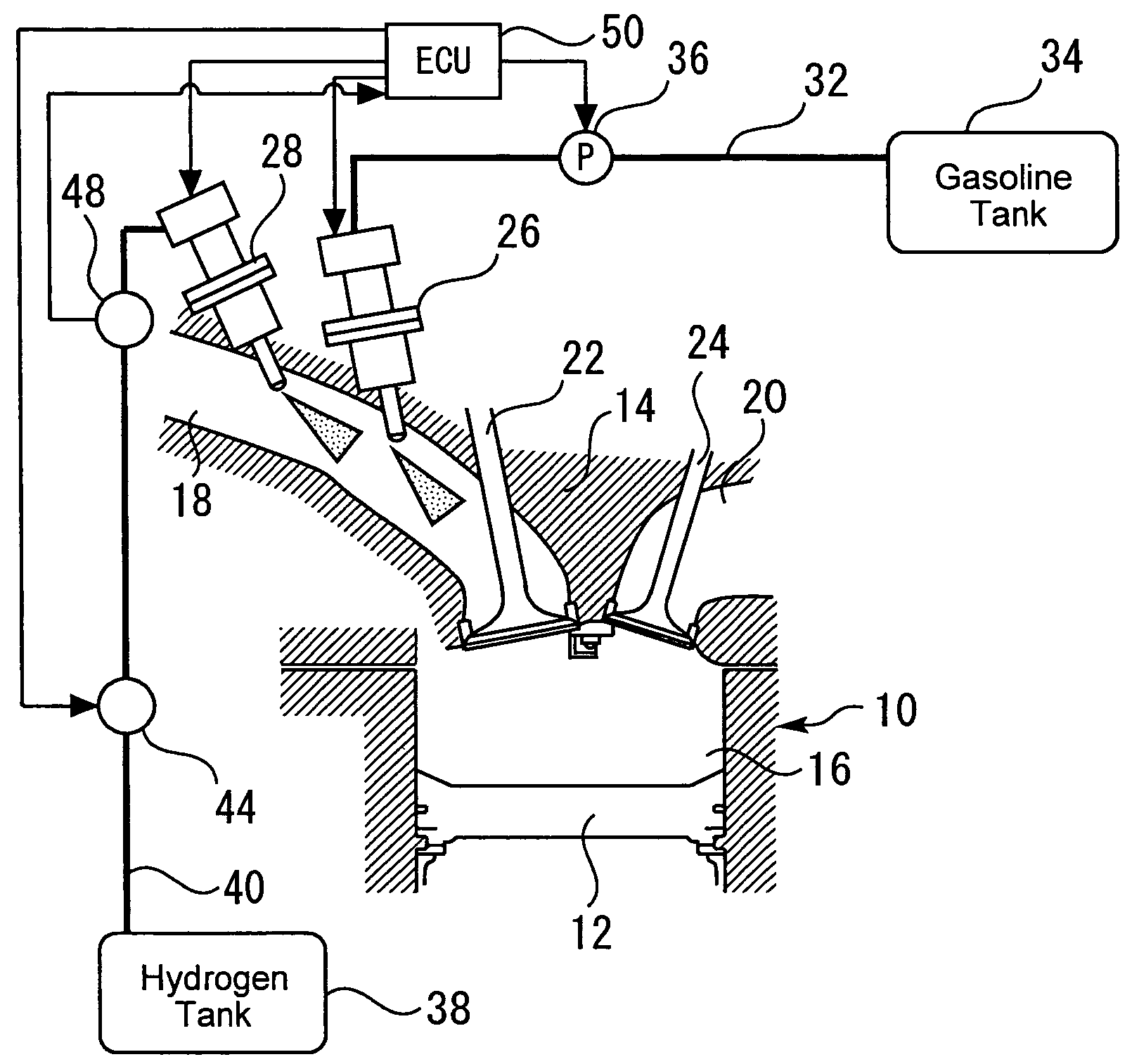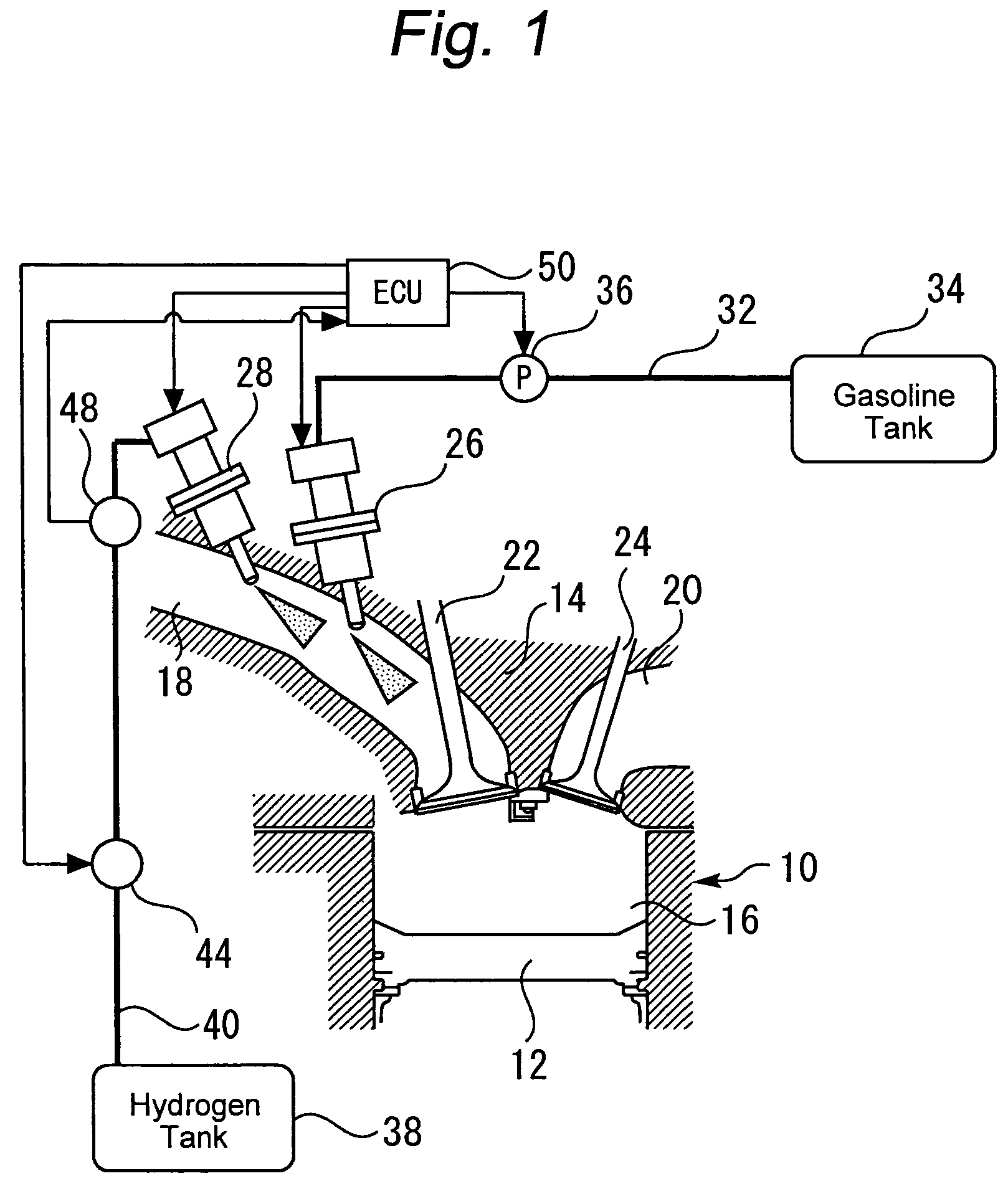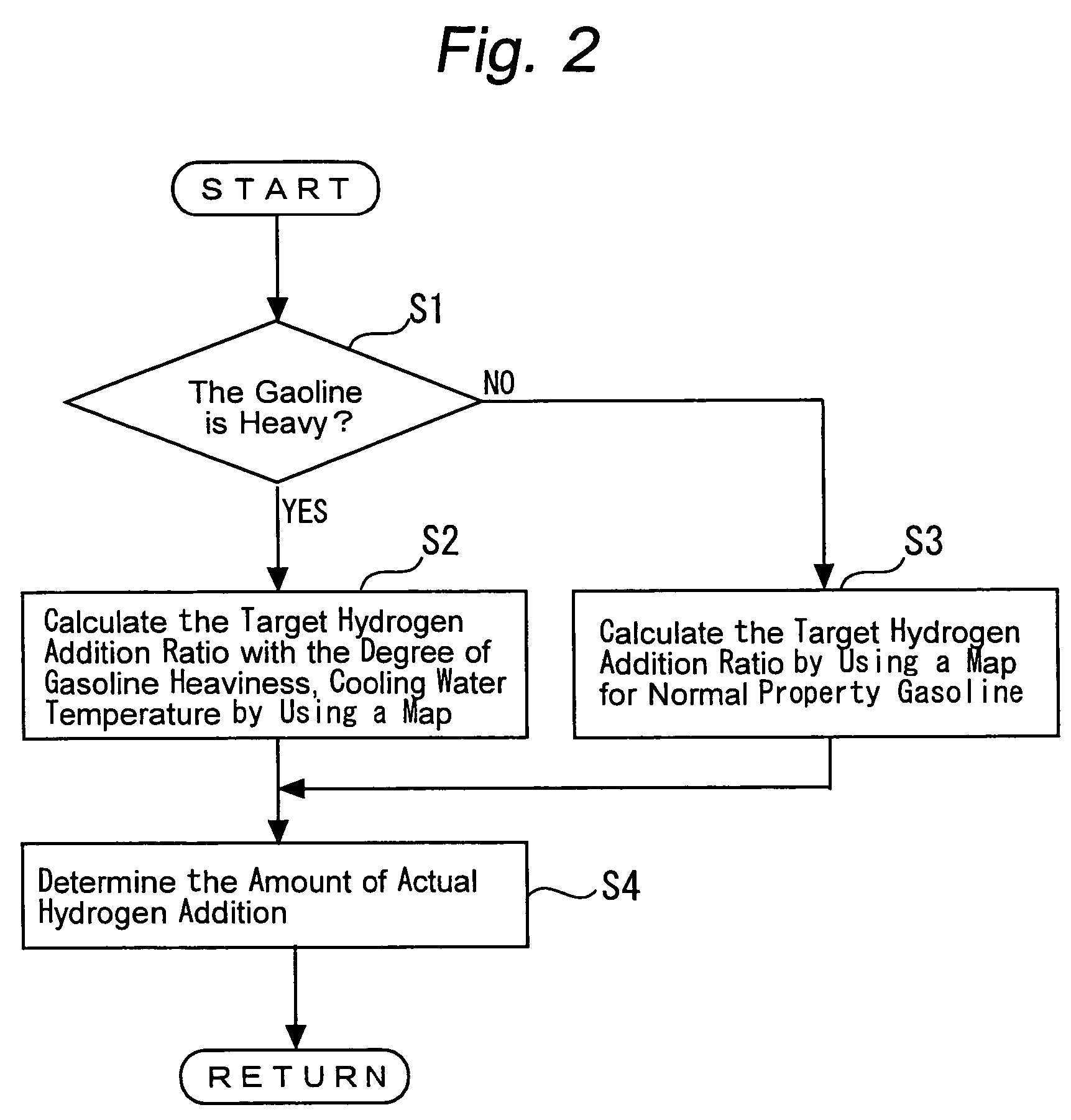Control system for hydrogen addition internal combustion engine
a control system and internal combustion engine technology, applied in the direction of electric control, machines/engines, mechanical equipment, etc., can solve the problems of deterioration of combustion within the cylinder, inability to consider the property of gasoline, and inability to control the combustion state of the engine, so as to prevent the combustion state from deterioration, good emission and driveability, and the effect of preventing the combustion sta
- Summary
- Abstract
- Description
- Claims
- Application Information
AI Technical Summary
Benefits of technology
Problems solved by technology
Method used
Image
Examples
first embodiment
[0028]FIG. 1 illustrates the configuration of a system that is equipped with a hydrogen addition internal combustion engine 10 according to a first embodiment of the present invention. A cylinder of the internal combustion engine 10 contains a piston 12, which reciprocates within the cylinder. The internal combustion engine 10 also includes a cylinder head 14. A combustion chamber 16 is formed between the piston 12 and cylinder head 14. The combustion chamber 16 communicates with an intake port 18 and an exhaust port 20. The intake port 18 and exhaust port 20 are respectively provided with an intake valve 22 and an exhaust valve 24.
[0029]The intake port 18 is provided with a gasoline injection valve 26, which injects gasoline (hydrocarbon fuel) into the intake port 18. The intake port 18 is also provided with a hydrogen fuel port injection valve 28, which injects hydrogen into the intake port 18.
[0030]The gasoline injection valve 26 communicates with a gasoline tank 34 via a gasolin...
second embodiment
[0047]A second embodiment of the present invention will now be described. The second embodiment employs the same system configuration as indicated in FIG. 1. The second embodiment particularly inhibits emission and driveability from deteriorating during the first idling period, which comes immediately after startup.
[0048]When the gasoline is heavy, it adheres to the wall surface of the intake port 18 or the inner wall surface of a cylinder. Thus, emission and driveability may deteriorate because cold hesitation is likely to occur particularly at cold startup. As such being the case, the second embodiment increases the hydrogen addition amount during the first idling period by setting a great initial value for the hydrogen addition ratio. After the end of the first idling period, the second embodiment exercises control so as to decrease the hydrogen addition amount to a lower-limit value that varies with the gasoline property.
[0049]When a great initial value is constantly employed fo...
third embodiment
[0064]A third embodiment of the present invention will now be described. When combustion becomes unstable immediately after startup due to the gasoline property or other factor, the third embodiment increases the hydrogen addition amount to provide good combustion in a cylinder. The system configuration employed for the third embodiment is the same as indicated in FIG. 1.
[0065]If combustion instability encountered at startup is not due to the gasoline property, it is conceivable, for instance, that fuel ignitability may be lowered by gasoline droplets formed on the ignition plug. Combustion instability also occurs if, for instance, the gasoline is bubbled at a high temperature before it is injected from the gasoline injection valve 26 so that the amount of gasoline injection from the gasoline injection valve 26 is smaller than a specified value.
[0066]When intra-cylinder combustion becomes unstable due to the gasoline property, the aforementioned factor, or other factor, the third em...
PUM
 Login to View More
Login to View More Abstract
Description
Claims
Application Information
 Login to View More
Login to View More - R&D
- Intellectual Property
- Life Sciences
- Materials
- Tech Scout
- Unparalleled Data Quality
- Higher Quality Content
- 60% Fewer Hallucinations
Browse by: Latest US Patents, China's latest patents, Technical Efficacy Thesaurus, Application Domain, Technology Topic, Popular Technical Reports.
© 2025 PatSnap. All rights reserved.Legal|Privacy policy|Modern Slavery Act Transparency Statement|Sitemap|About US| Contact US: help@patsnap.com



